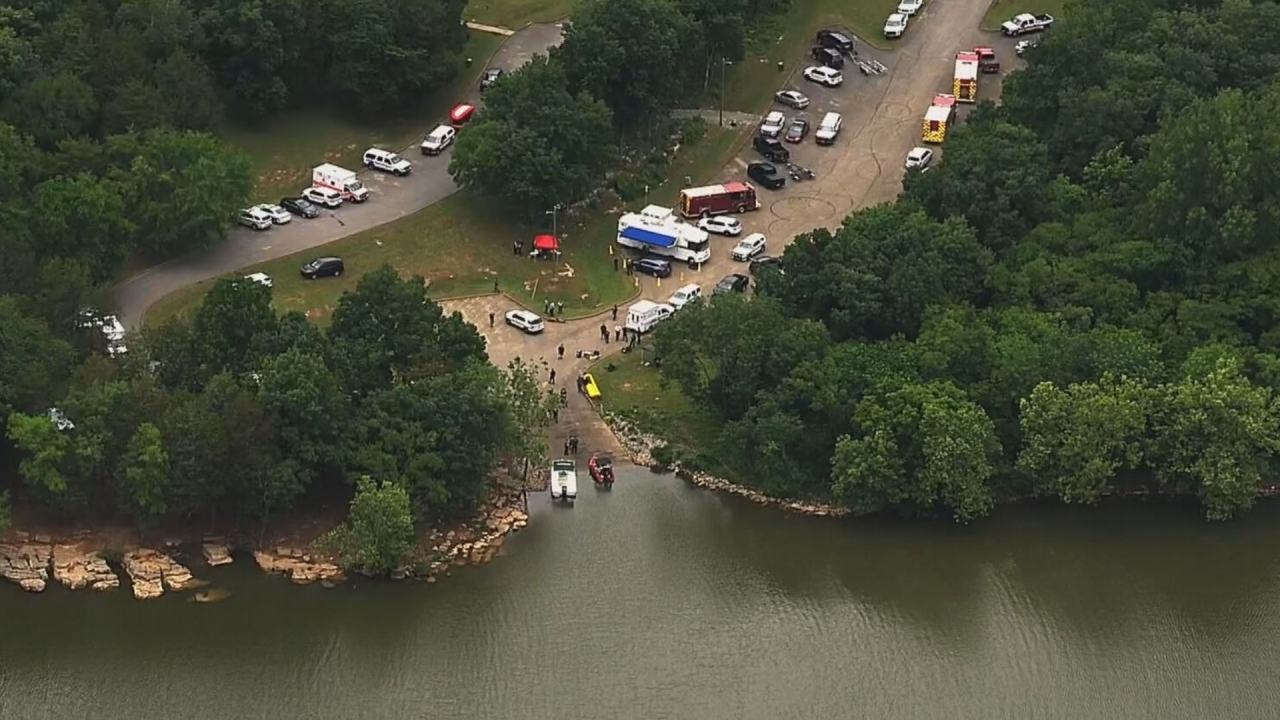SMYRNA, Tenn. (WTVF) — The National Transportation and Safety Board released its preliminary report of a plane crash on Percy Priest Lake that killed seven people.
The Cessna 501 departed at 10:53 a.m. The report details the moments the pilot made contact with Nashville departure control and when contact was lost.
At 10:55 a.m., "the controller instructed the pilot to climb and maintain 15,000 ft msl, but there was no response. The controller then made multiple attempts to re-establish communications with the airplane; however, there were no further communications."
Radar data shows that the airplane made a series of heading changes along with several climbs and descents before it entered a steep, descending left turn. "The last radar return, at 10:55 a.m. indicated the airplane was at an altitude of about 700 ft msl, descending about 31,000 ft-per-minute, on a heading of 090 degrees," the report stated."
A fisherman described seeing the plane hit the water in a “straight down” nose-first attitude. He did not see any evidence of fire or an explosion. It crashed in a shallow section of the lake that was about 2 to 8-ft-deep, the report states.
"If they do find in the final analysis that there were no mechanical problems then they have to fall back on the human factor issue," said Robert Fowler, an Assistant Professor of Aerospace at Middle Tennessee State University.
Fowler says human factors could include a simple mistake on the part of the pilot, or even weather. "One of the possibilities was disorientation due to the fact the pilot didn’t have any visual references, so had to rely on the aircraft’s instruments," said Fowler.
A total of seven people were on board. All of them died in the crash.
About two-thirds of the plane was recovered from the lake, which included both engines, the main cabin door, portions of the main cabin windows, the left nose baggage door, all three- landing gear, most of the tail section, and sections of both wings, including portions of the flaps and ailerons.
Several fractured seat frames and pieces of the interior were also recovered.
Professor Fowler says the NTSB's investigation could be harder to conduct because the crash ended in the lake. The report indicates they've recovered two thirds of the aircraft, including the two engines, but it doesn't sound like they were able to recover the cockpit. That may mean they won't be able to check the plane's instrument panel was working possibly.
The airplane was not equipped; nor was it required to be equipped with a flight data recorder (FDR) or a cockpit voice recorder (CVR).
The NTSB will continue its investigation and will release a final report with its findings. Read the full report here.






